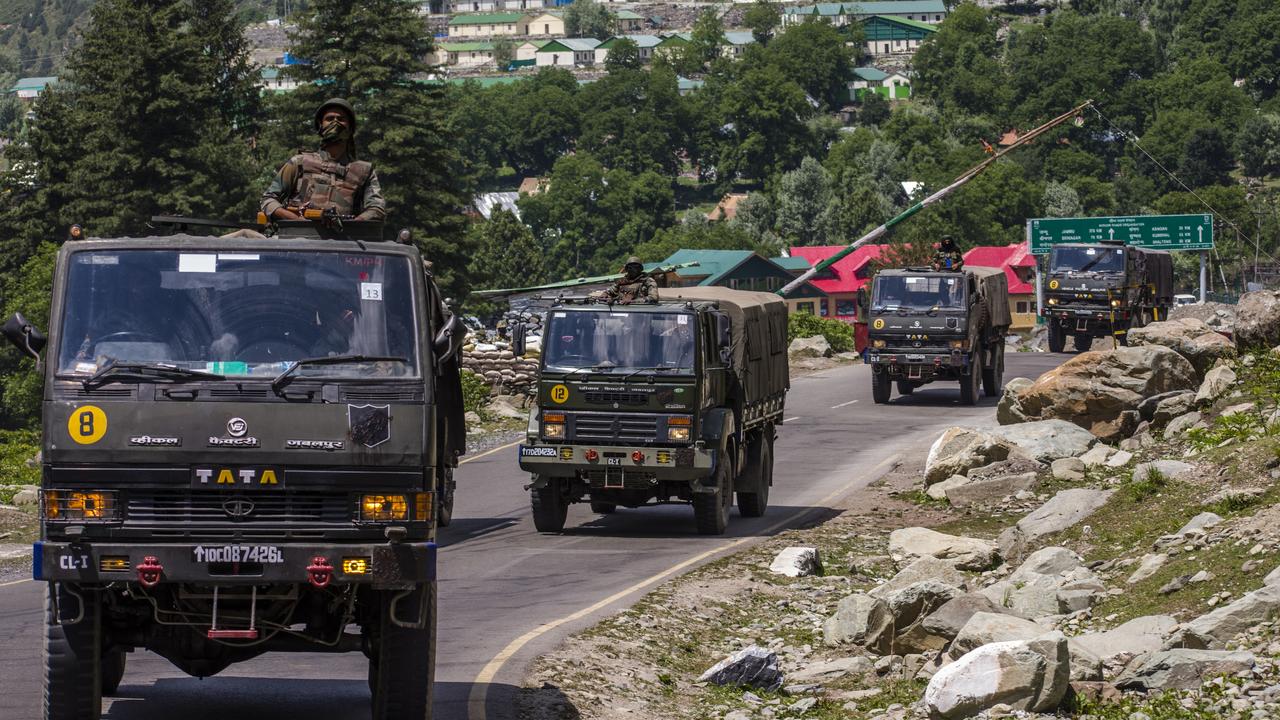India-China border news: China performs live fire drill near Himalayan border
China’s recent show of power is once again stoking long-held tensions with India, in a never-ending border dispute that threatens to turn deadly.

China has launched a series of live drills in its latest show of dominance along the Himalayan border it shares with India.
China Central Television broadcast infantry troops carrying weapons primed for “high-altitude combat-readiness”, like sniper rifles, mounted remote control weapon systems, mortars, grenade launchers and antitank missiles, as reported by the South China Morning Post.

Macau-based military observer Antony Wong Tong told the publication that it was a sign China’s People’s Liberation Army (PLA) were priming their military for potential unrest in the area and “future contingencies”.
“The use of the Type 06 semiautomatic grenade launchers and mortars in the recent drill indicated China would deploy the powerful but handy weapons with precision strike capabilities to other disputed border areas,” he said.
This comes as long-range H-6K bomber planes were seen in the region earlier this week. While the PLA claims the move was not meant to aggravate or escalate tensions, but to celebrate the PLA Air Force’s 72nd-anniversary, Indian sources have disagreed.
Despite this, the India-based Economic Times says the “move is significant amid the current standoff.”
Quoting an unnamed Delhi-based source, they stated it was a way for China to showcase its long-range bombers.

A large part of China’s foray into expanding its weaponry is to ensure it is on par with the US by 2027. Former president of the Chinese Communist Party Jiang Zemin began the initiative, with the aim to reach the target by 2035, however current President Xi Jinping fast-tracked the deadline in 2020.
Under the new timetable, China aims to “fully transform the people’s armed forces into world-class forces” by 2049, as stated in a 2020 defence white paper.
Recently a paper from the Pentagon – the headquarters of the US Department of Defence – reported that China could acquire a deliverable arsenal of 700 nuclear warheads, with that figure increasing to 1000 by 2030. If true, this would be over double the 400 nuclear warheads the Pentagon originally predicted in 2020.
China and India border: A tense history
Although clashes between China and India are quite frequent, they’re normally kept to military standstills, which don’t often result in actual conflict.
In 2017 this famously led to the 73-day standoff in the contested area of Doklam which is claimed by both China and Bhutan. Indian soldiers intervened when Chinese engineers attempted to build a road through the Doklam plateau in the Himalayan plateau, however tensions were stifled after weeks of negotiations between Delhi and Beijing.
Unprecedented clashes also occurred in June 2020, at the Line of Actual Control (LAC), which resulted in the death of 45 Indian soldiers and at least four Chinese troops. Despite this, many believe China suffered more fatalities than official reports suggested.

Writing about the Ladakh crisis for the Lowy Institute – an Australian think tank that focuses on international issues – an expert on South Asian conflict, Arzan Tarapore said the skirmish posed new challenges for both India and China.
“India faces a new strategic reality in which China is a clear and abiding adversary,” he said. “For India, the political relationship is now defined by hostility and distrust, and the LAC will remain more heavily militarised and violence-prone.”
And although official conflict ended with a surprise announcement in February 2021, further distrust had been cemented between the superpowers, threatening the already fragile stability in the area.
“Even if the February 2021 disengagement plan is executed and leads to new confidence-building measures,” Dr Tarapore continued, “India’s newfound distrust of China will likely demand a heavier military posture nearby that enables rapid mobilisation to the LAC.”

In September this year, Australia was also pulled into their geopolitical tussle when Foreign Minister Marise Payne and Defence Minister Peter Dutton arrived in New Delhi to hold a ‘2+2’ ministerial dialogue on bilateral issues.
An .op-ed published in the Global Times claimed the US, Japan, India and Australia were trying to establish an “Asian NATO”, identifying India-Australia relations as the “weak link” of the bloc.
The author of the piece, Professor Lin Minwang at the Institute of International Studies at Fudan, said the burgeoning relationship was a sign of Australia of being a “US pawn”.
“With the intensified strategic competition of the US against China, Canberra and New Delhi have formed a consensus on the policy of jointly containing Beijing,” wrote Prof Lin.
“Australia is willing to be a US pawn to charge forward in a series of issues to discredit China.”






